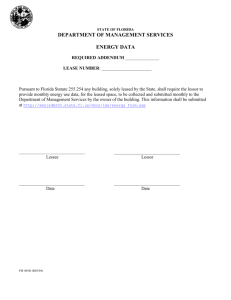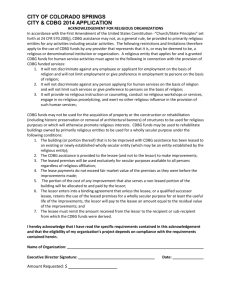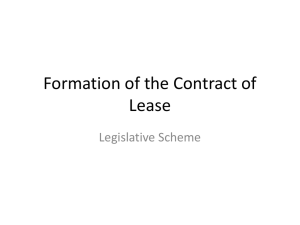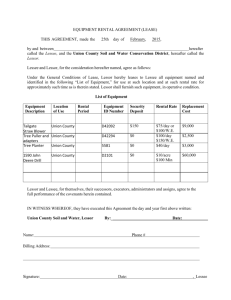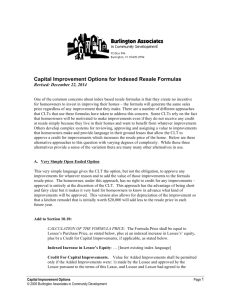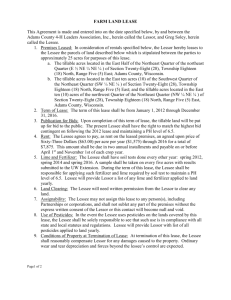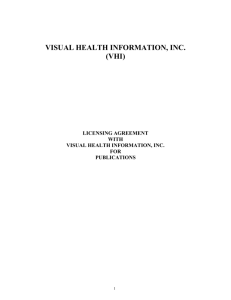VIE – Lease Presenantion
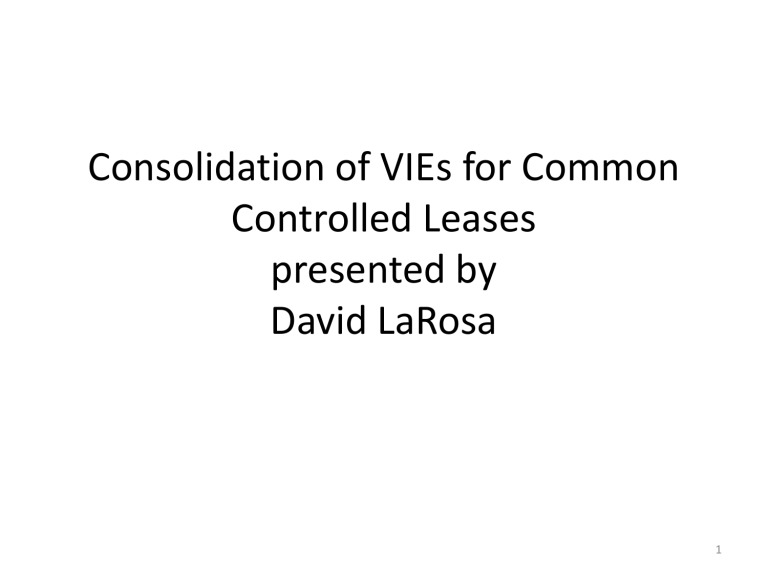
Consolidation of VIEs for Common
Controlled Leases presented by
David LaRosa
1
Financial Statement User Complaints
• Common owner establishes entities for tax, estate planning, legal-liability purposes-not to structure off-balance-sheet debt arrangements
• Consolidation is not relevant to the users because they focus on the cash flows and tangible net worth of the standalone private company lessee entity
• Distorted financial statements as assets by the consolidated lessor are beyond the reach of the lessee’s creditors, even in bankruptcy or other receivership
2
Private Company Council
• The PCC added this issue to its agenda in response to feedback from private company stakeholders and reached a consensus to provide an elective accounting alternative for private companies which the FASB endorsed leading to FASB Accounting
Standards Update No. 2014-07, Applying Variable
Interest Entities Guidance to Common Control
Leasing Arrangements
3
Main Provisions – When to elect
1. The private company lessee and the lessor are under common control
2. The private company lessee has a leasing arrangement with the lessor
3. Substantially all of the activity between the private company lessee and the lessor is related to the leasing activities (including supporting leasing activities) between those two companies, and
4. If the private company lessee explicitly guarantees or provides collateral for any obligation of the lessor related to the asset leased by the private company, then the principal amount of the obligation at inception does not exceed the value of the asset leased by the private company from the lessor.
If elected, the accounting alternative should be applied to all leasing arrangements meeting the above conditions.
4
Leasing Activities
• A guarantee or collateral provided by the private company lessee to the lender of a lessor legal entity under common control for indebtedness that is secured by the asset(s) leased by the private company lessee
• A joint and several liability arrangement for indebtedness of the lessor legal entity, for which the private company lessee is one of the obligors, that is secured by the asset(s) leased by the private company lessee
• Paying property taxes, negotiating the financing, and maintaining the asset(s) leased by the private company lessee
• Paying income taxes of the lessor legal entity when the only asset owned by the lessor legal entity is being leased by either by only the private company or by both the private company lessee and an unrelated party
5
Differences from current U.S. GAAP
• U.S. GAAP requires a reporting entity to consolidate an entity in which it has a controlling financial interest. There are two primary models for assessing whether there is a controlling financial interest: the voting interest model and the VIE model. Under the voting interest model, a controlling financial interest generally is obtained through ownership of a majority of an entity’s voting interests. Under the VIE model, a reporting entity is deemed to have a controlling financial interest
(that is, deemed to be the primary beneficiary) when it has both (1) the power to direct the activities that most significantly affect the economic performance of the entity and (2) the obligation to absorb losses or the right to receive benefits of the entity that could potentially be significant to the entity. To determine which model applies, a reporting entity must determine whether it has a variable interest and the whether the entity being evaluated is a VIE.
• FASB Update 2014-07 allows a private company to elect not to apply VIE guidance to a lessor entity under common control
6
Disclosures
If elect Update 2014-07, a private company lessee would disclose:
1) the amount and key terms of liabilities recognized by the lessor entity that would expose the private company lessee to providing financial support to the lessor entity (debt, interest rate, maturity, pledged collateral and guarantees)
2) a qualitative description of circumstances not recognized in the financial statements of the lessor entity that expose the private company lessee to providing financial support to the lessor entity (certain commitments and contingencies)
7
EFFECTIVE DATE
• Effective for annual periods beginning after
December 15, 2014, and interim periods within annual periods beginning after
December 15, 2015. Early application is permitted for all financial statements that have not yet been made available for issuance.
8
Example Contractor
• Lessee leases office and shop space from related entity (month-to-month lease)
• Lessor has a mortgage on the property
• $9,013 per month at 4.5% due December
2033
• Mortgage guaranteed by owners which own both the lessee and lessor
9
